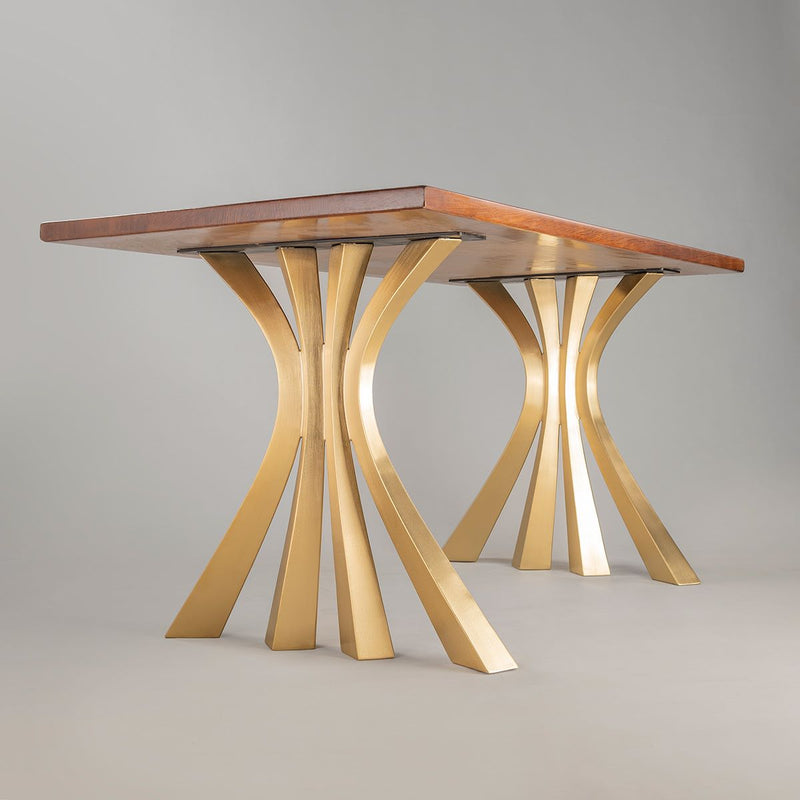Table Legs: Exactly How to Select the Best Designs for Your Room
Picking the appropriate eating table legs is vital for both visual and practical harmony in your eating room. Whether your space boasts a smooth, modern ambiance or leans in the direction of a much more standard atmosphere, the style of the legs can dramatically affect the total appearance. Tapered legs exhibit contemporary style, while transformed legs provide a nod to classic beauty. Past style, the material-- be it cozy timber or sleek metal-- plays a pivotal duty in establishing the tone. Exactly how do you guarantee these components match your existing design while providing the needed stability? The solution hinges on a well balanced technique.
Examining Your Eating Room Design
Just how do you determine the very best table legs for your area? The solution starts with an extensive analysis of your dining-room style. A cohesive style makes sure that your table legs boost the total visual as opposed to encounter existing elements. Start by observing the architectural features of your dining-room. Are there famous features such as revealed light beams, intricate moldings, or minimal lines? These details typically determine whether a typical, rustic, modern, or commercial design is most proper.
Following, think about the existing furniture and decor. The materials, shades, and structures within the space play a vital role. For example, a dining-room with smooth, contemporary chairs and metallic accents might profit from easy, streamlined table legs. On the other hand, a room loaded with classic items and rich textiles might ask for luxuriant, carved legs.
Lighting also affects perception. Natural light can accentuate particular materials and coatings, while man-made lighting can highlight various facets. Account for the area's scale and percentages. Huge, open dining-room can fit heavier, extra substantial legs, whereas smaller sized spaces need even more delicate, unobtrusive styles. By carefully examining these factors, you can select eating table legs that harmoniously blend with your dining-room's style.
Popular Leg Styles Discussed

One widespread style is the tapered leg, renowned for its sleek, modern-day appearance. This leg tightens inside out, providing a minimalist appeal appropriate for modern and Scandinavian interiors. Next off, the transformed leg attributes elaborate spindle-like layouts, usually located in typical and farmhouse setups. These legs add a touch of craftsmanship and sophistication.
Cabriole legs, with their distinct curves, are synonymous with French Provincial and Queen Anne furniture. Their stylish, streaming lines bring a feeling of elegance and historical appeal (dining room table legs). For those favoring a robust and straightforward layout, square legs offer sturdy support and a tidy, geometric appearance, perfect for industrial or minimal areas
Lastly, hairpin legs offer a retro, mid-century modern-day ambiance. Made from metal, these legs are both lightweight and strong, including an unique aesthetic contrast to wooden tabletops. Understanding these designs will certainly assist you in picking dining table legs that boost your why not try this out space's aesthetic and functionality.
Material Considerations

Timber is a timeless choice, recognized for its heat and versatility. It comes in various types such as oak, walnut, and maple, each offering unique grain patterns and colors. Steel legs, frequently made from stainless-steel, iron, or light weight aluminum, offer a contemporary and commercial appearance while ensuring robust support. They are normally extra immune to deterioration, making them a long lasting choice.

Other products like bamboo or rattan use green alternatives, bringing a natural and unwinded ambiance to the eating location. Each material has its advantages and disadvantages, and the very best choice will rely on your details requirements and choices.
Harmonizing Visual Appeals and Capability
Achieving the perfect balance in between appearances and capability is necessary when selecting table legs. While the aesthetic appeal of table legs can dramatically boost the overall ambiance of an eating area, their functional facets can not be forgotten. The design of the legs should balance with the room's décor, yet they must also offer appropriate assistance and security for the table.
Take into consideration the architectural layout of your area. Sleek, contemporary insides may gain from minimalist, metal legs that offer here a tidy and inconspicuous look. On the other hand, traditional settings frequently complement turned or sculpted wood legs that include a touch of elegance and refinement.
Performance incorporates the security and toughness of the legs. For circumstances, trestle legs, recognized for their effectiveness, can provide strong assistance for larger tables, making them excellent for families or regular performers. dining room table legs. Alternatively, pedestal legs can supply more legroom and flexibility, enabling much better seating arrangements
Furthermore, the elevation and positioning of the legs are important for comfy eating. Legs put too far internal may hinder seating, while those as well near to the side can limit motion. Hence, thoughtful consideration of both visual and practical aspects is critical for an optimal eating experience.
Modification and DIY Options
Modification opens up a world of opportunities for creating eating table legs that are distinctively customized to your taste and requirements. Details design aspects, such as transformed legs, tapered forms, or intricate carvings, can be integrated to mirror your design.
For those likely towards do-it-yourself (DIY) projects, creating customized eating table legs provides both a gratifying experience and the chance to accomplish a bespoke aesthetic. DIY enthusiasts can resource basic materials and utilize woodworking or metalworking tools to craft legs that meet exact requirements. Additionally, various on the internet tutorials and workshops provide guidance, making the procedure more available for beginners.
Ultimately, whether choosing specialist customization or getting started on a do it yourself venture, the ability to customize visit homepage table legs makes certain that the end product balances with your indoor layout vision, boosting both functionality and visual charm.
Final Thought
Selecting the ideal dining table legs requires careful consideration of the general style of the dining space, including existing architectural attributes and furniture. Eventually, the picked table legs must enhance the decor, supplying both aesthetic charm and functional support.